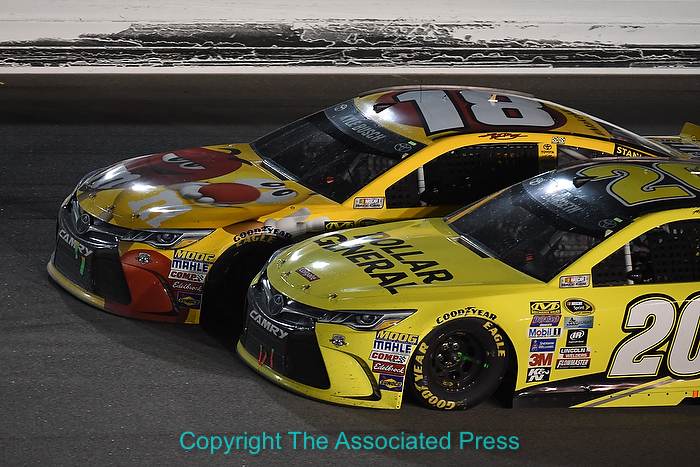Most people think that shooting a NASCAR race is all about loud cars running round a track. But the race is only part of that event. There are three other things happening that are as important, and often make better pictures: the preparations for the race, the people who come to watch and the celebration at the end.
Actual race coverage always depends on how many photographers you have available. For some races there are anywhere from four to six of us, which means one person will be dedicated to pit row, one to the roof and the rest to the corners (primarily watching for wrecks). With enough people, you might have two in the pits, and perhaps one person covering the race from the grandstands area to also shoot fans.
I recently spent two days covering racing at Kansas Speedway for the Associated Press. In this case there were just two of us, which meant one person in the pits and the other on the move, trying to shoot the race from different positions. With just two, we assume we’re not going to get a wreck unless we’re lucky, so we concentrate on the rest what’s happening.
Knowing the different things I’d need to shoot let me plan for the gear I’d need. Because of the fast action, I’d need cameras with high frame rates and fast autofocus. That meant my Nikon D3 and D4S cameras. Each will fire at about ten frames-per-second, and as the most expensive cameras in the line, have the most powerful autofocus systems. The two races (one with trucks, one with cars) were also going to be at night, which meant I’d need top-of-the-line low light performance. Those cameras gave me that too.
For lenses, I’d want to be able to shoot from super-wide to long telephoto. Wide for feature photos, long for race shots. And that night racing added one more requirement – I’d need fast lenses (wide aperture) to keep high shutter speeds. If the races were during the day, I could use lighter telephotos with smaller apertures. Those fast lenses are heavy, so I’d actually take some lenses to use during the day while shooting race preparations and fans, and switch to the other, heavier lenses for the races at night. Since I’d be working out of the media center, where I’d also be transmitting photos from during the day (and night), I could store those extra lenses there when not using them.
Here’s what I ended up taking:
Two cameras, Nikon D3 and D4S
Ten CF cards, from 8GB to 32GB
Nikkor 16mm f/2.8 fisheye
Nikkor 18-35mm f/3.5-4.5 lens
Nikkor 24-120mm f/4 lens
Nikkor 80-400mm f/4.5-5.6 lens (day shooting)
Nikkor 70-200mm f/2.8 lens (night shooting)
Nikkor 200-400 f/4 lens (night shooting)
In addition to all of that, since I’d need to download, edit, caption and transmit photos throughout the two days, I also needed a computer. That was a MacBook Pro 13-inch with two card readers (the second as a backup in case the first failed).
Here are some of the photos I shot and transmitted over those days, and a bit of information about them:
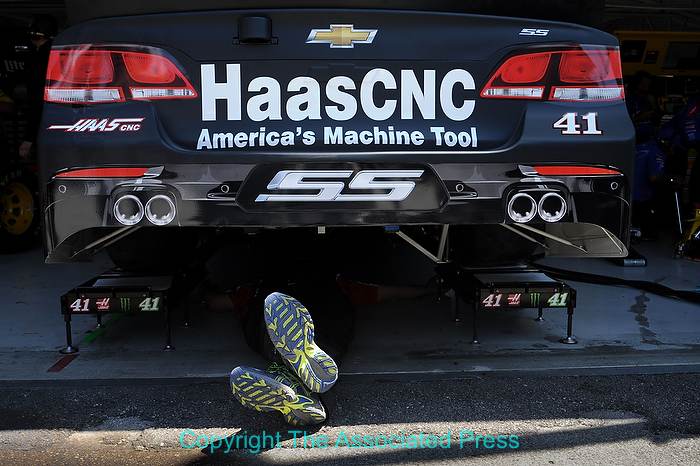
This is a fun picture I found in the garage area. That’s a busy area before the race, which means it’s a good place to look for photos. Nikon D3, Aperture Priority, white balance of Sunlight, ISO 250, 1/125 at f/10, EV -1.3, Nikkor 24-120mm lens at 32mm. Photo copyright the Associated Press.
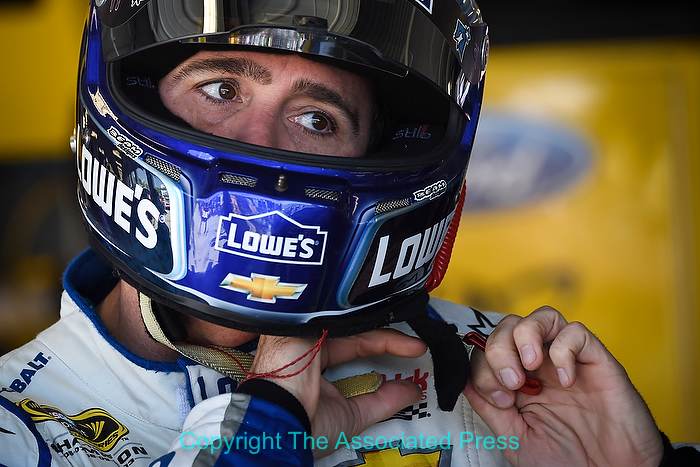
I took the 80-400mm lens because it would let me zoom in to areas I can’t get close to, and make pictures like this of Jimmie Johnson getting ready to go out on a practice run. Nikon D4S, Aperture Priority, white balance of Sunlight, ISO 1000, 1/500 at f/5.6, EV 0.0, 80-400mm Nikkor lens at 330mm. Photo copyright the Associated Press.
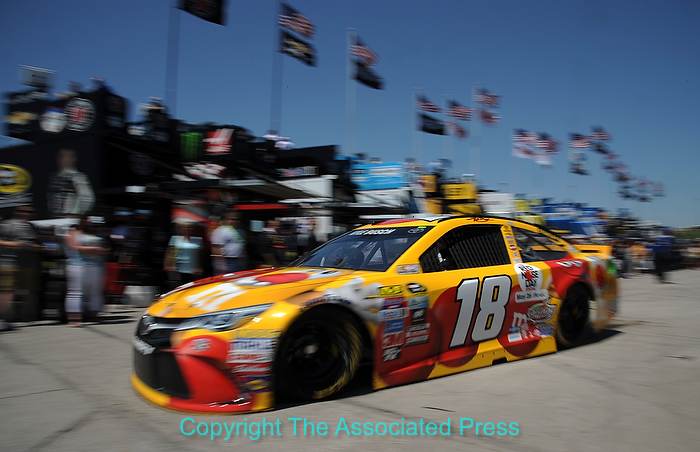
You have to always ask, “what can I do that’s different,” like shooting a pan photo of one of the cars headed out for qualifying. Nikon D3, Aperture Priority, white balance of Sunlight, ISO 100, 1/60 at f/22, EV -0.3, Nikkor 24-120mm lens at 24mm. Photo copyright the Associated Press.
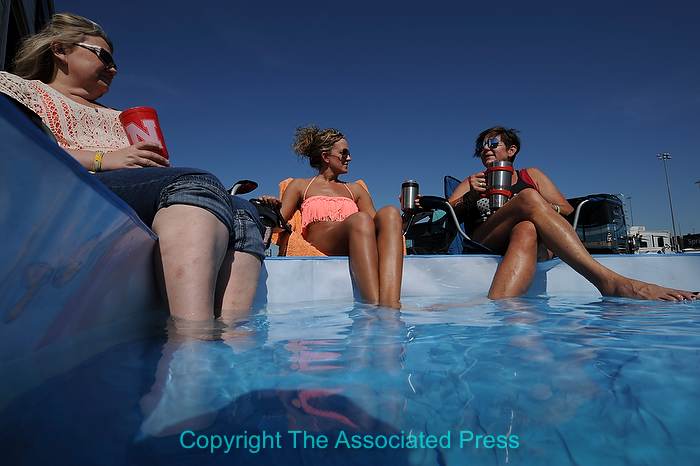
Feature shots, like this one of fans relaxing in the infield, are some of the photos you’re expected to make. Nikon D3, Aperture Priority, white balance of Sunlight, ISO 200, 1/1250 at f/9, EV -0.7, 18-35mm Nikkor lens at 18mm. Photo copyright the Associated Press.
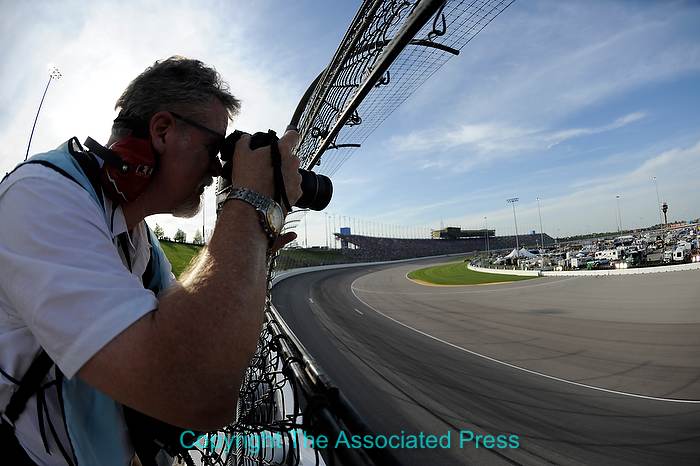
There are “windows” of a sort in the outer wall for photographers to shoot through. Joe Ledford of the Kansas City Star gets ready for the race start at this one. Nikon D3, Aperture Priority, white balance of Sunlight, ISO 320, 1/2000 at f/5.6, EV +0.3, Nikkor 16mm fisheye lens at 16mm. Photo copyright the Associated Press.
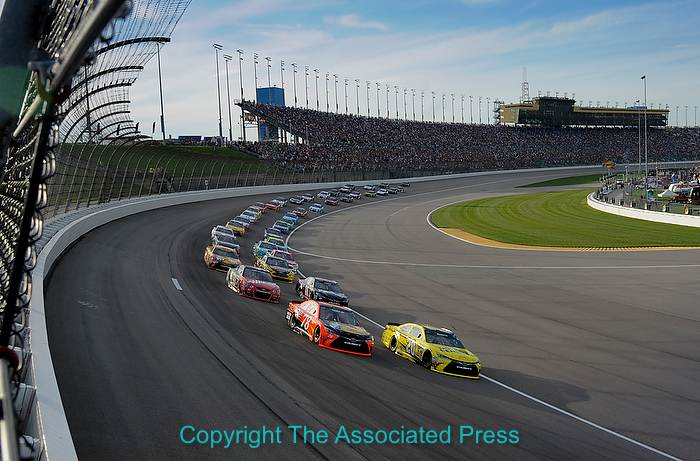
During a yellow flag, the drivers bunch up again for the restart, which is a great chance to show the entire field together. Nikon D3, Aperture Priority, white balance of Sunlight, ISO 400, 1/1000 at f/5.6, EV 0.0, Nikkor 24-120mm lens at 24mm. Photo copyright the Associated Press.
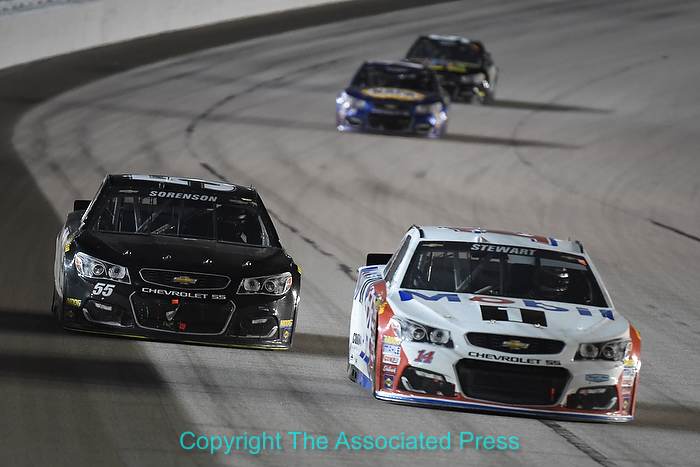
You need to get photos of the individual cars, and as they spread out during the race you have that opportunity. This is shot from one of the “windows” mentioned before, as I leaned out over the track with my camera. Nikon D4S, Aperture Priority, white balance of AUTO1, ISO 6400, 1/640 at f/4, EV 0.0, Nikkor 200-400mm lens at 400mm. Photo copyright the Associated Press.
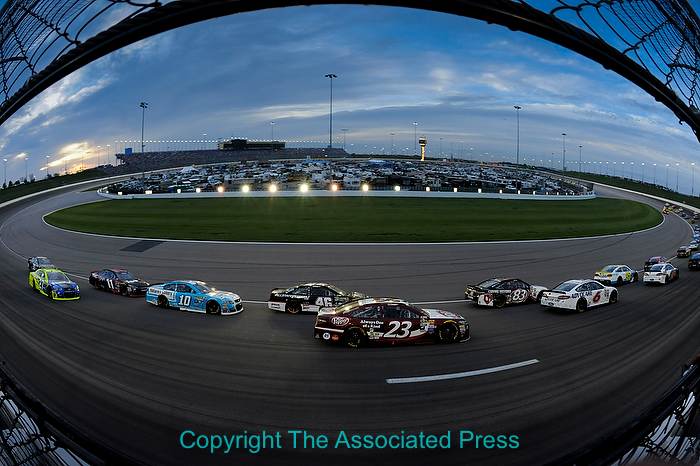
You’re also expected to make more than the standard race pictures, which means shooting pans and using exotic lenses, like this fisheye, to create different photos. Nikon D3, Aperture Priority, white balance of Sunlight, ISO 2000, 1/500 at f/9, EV -0.3, Nikkor 16mm fisheye lens at 16mm. Photo copyright the Associated Press.
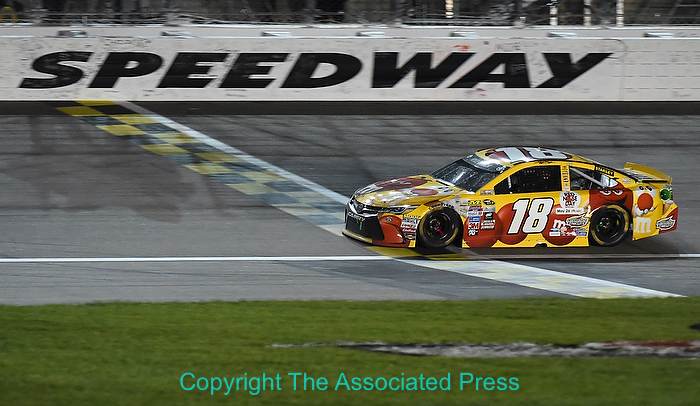
Kyle Busch crossing the finish line to win the race. Making sure you’re in a good position to shoot the finish, and getting the car crossing the line are of course a high priority. Nikon D4S, Aperture Priority, Auto white balance, ISO 6400, 1/1000 at f/4, EV -0.3, Nikkor 200-400mm lens at 290mm. Photo copyright the Associated Press.
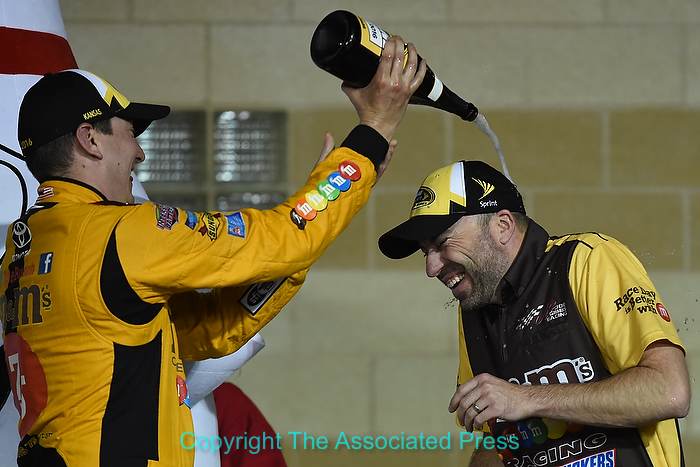
While the winner with their arms up is the classic shot, you’re also watching for any other celebration that makes a good picture. Nikon D4S, mode, Auto white balance, ISO 3200, 1/500 at f/5, EV 0.0, Nikkor 200-400mm lens at 310mm. Photo copyright the Associated Press.
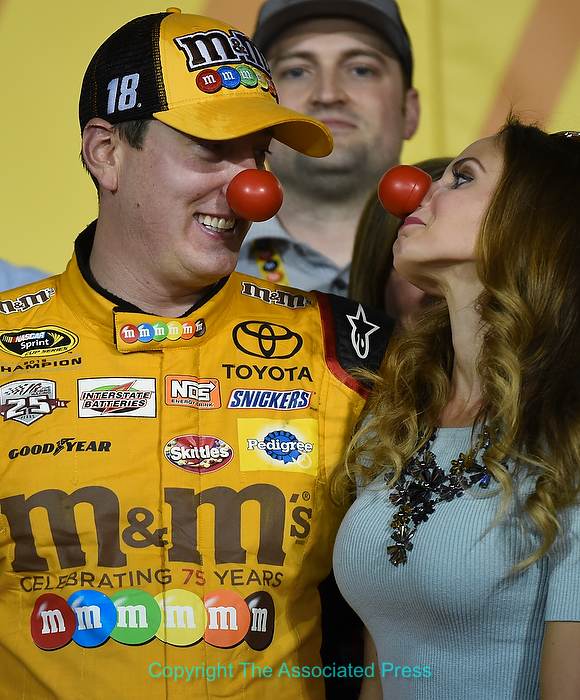
If you’re lucky, something different happens and you get a fun photo. While most photographers shoot the celebration afterwards with 70-200mm lenses, I chose the longer 200-400mm in hopes I could get a tighter shot of something like this. Nikon D4S, Aperture Priority, white balance of Auto, ISO 3200, 1/500 at f/5, EV 0.0, Nikkor lens at 400mm. Photo copyright the Associated Press.

